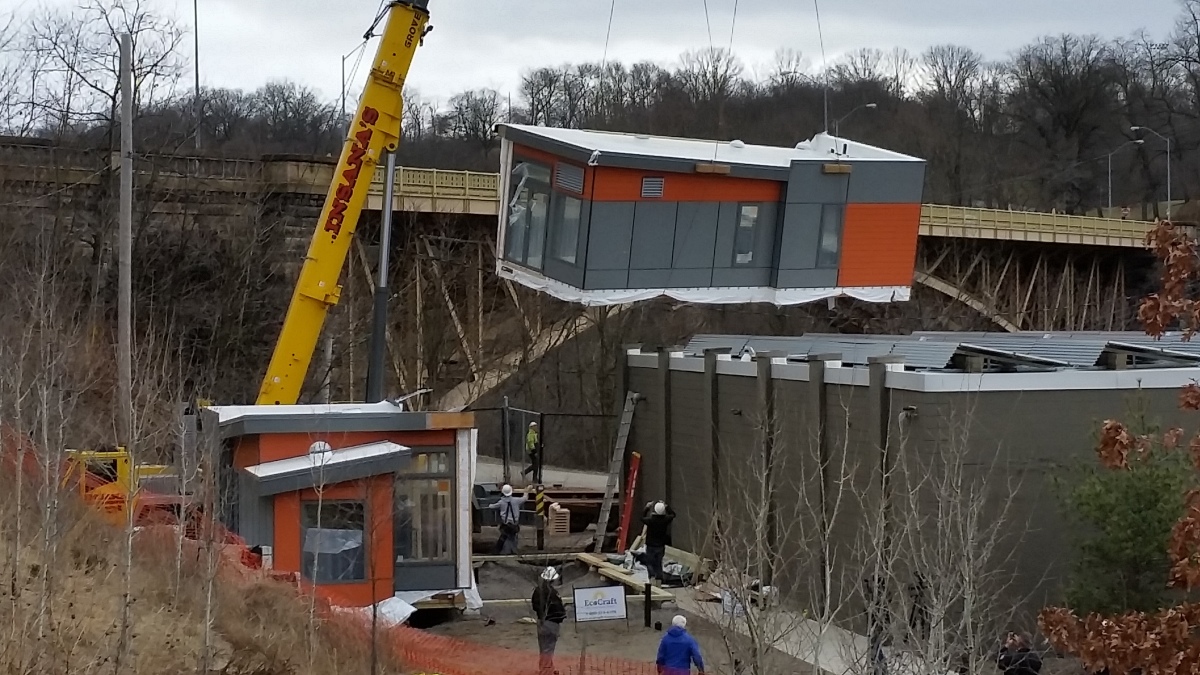
Phipps debuts new sustainable SEED classroom
Long known for its displays of lush plant life, Phipps Conservatory and Botanical Gardens is an innovator among public gardens promoting educational initiatives with an eye toward sustainability. It’s fitting, then, that Phipps will become the permanent home to a sustainable classroom this April.
The SEED (Sustainable Education Every Day) modular classroom is only the second to be built–the first is the prototype, designed by Seattle architect and SEED Collaborative Executive Director Stacy Smedley to meet rigorous Living Building Challenge standards. “The SEED classroom is a powerful model for demonstrating the importance of providing healthy places for children to learn,” says Phipps’ Executive Director Richard V. Piacentini who sees the addition of the SEED classroom as an exciting opportunity to start a conversation about green buildings and their impact on the health of our children.
For years, modular classrooms have offered a convenient solution for over-crowded schools—there are about 260,000 such classrooms in use across the country. But the extra space provided by trailers often comes at a cost. Inadequate ventilation and lighting, mold, excess moisture and off-gassing from toxic building materials like formaldehyde, flame retardants, phthalates and volatile organic compounds all have detrimental effects on children’s health. “Kids are the most vulnerable members of society and we often put them in buildings that aren’t healthy,” says Piacentini.
The building will be fabricated locally by EcoCraft Homes and Piacientini hopes to see more facilities pop up across the region, not only improving environmental standards for children’s spaces but giving a boost to the local economy. Most modular trailers are flimsy and last about 20 years at most. By contrast, the SEED classrooms are built to last and have the potential to be mobile or permanent fixtures for schools, museums, camps and daycares.
Research suggests that access to nature positively affects human health. The SEED classroom will be designed to avoid the health pitfalls of traditional modular facilities, while integrating abundant natural daylight, which may actually improve health. The classroom is being constructed with non-toxic building materials and will also include solar panels to provide for 100% of energy needs and water treatment features that allow for greywater and rainwater to be collected and filtered for re-use. Exposed mechanical systems will invite students to investigate scientific questions.
In addition to impacting thousands of children each year as the new home of Phipps’ science education programs, the SEED Classroom will be open to the public for tours. A tour schedule will be posted online in late April.
“Phipps has demonstrated leadership by being the first on the East Coast to embrace a SEED classroom,” says Smedley. “We are excited to be a part of Phipps’ continued commitment to educating children and adults on the important role that the built environment should play in restoring planetary and human health.”
Featured photo: Construction begins on Phipps’ new SEED classroom, Photo courtesy of Phipps Conservatory and Botanical Gardens